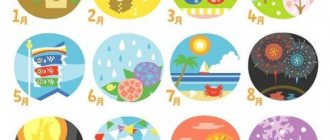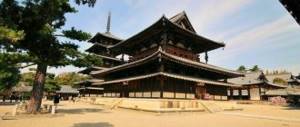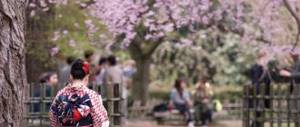Coming of Age Day in Japan
Coming of age day is a significant date in the life of every person. Even yesterday's teenager, upon reaching a certain age, becomes a full member of society and the state. From this time on, he has additional rights and responsibilities. In every country and family this day is celebrated differently, but in Japan this holiday has been elevated to the rank of a national holiday.
This Japanese public holiday was officially established in 1948. The purpose of the holiday is to congratulate and encourage people who have reached adulthood; the holiday helps yesterday's teenagers understand that they are already adults. Previously, the date of celebration was set on January 15, but since 2000. Seijin no Hi Coming of Age Day began to be held annually on the second Monday of January.
In Japan, the day of majority since 1876 is considered the day of turning 20 years old.
The origins of the coming-of-age celebration go back to at least 714, when a young prince had his hairstyle changed from a child to an adult, dressed in adult clothes, and given a name change, thereby marking his entry into a new adult life. In ancient times, the ceremony of entry into adulthood was carried out only for noble families and the samurai class; subsequently, this tradition began to be performed by commoners. The ceremony of transition to adulthood itself is called genpuku. During the Edo period, boys had their hair shaved off their foreheads and tied the rest into a braid. The age at which boys entered adulthood was different and ranged from 12 to 16 years.
Girls in ancient Japan had their own ritual of transition to adulthood, it was called mogi (literally putting on a dress) and this happened at the age of 12-14. From that time on, they became adults and could get married and bear all the responsibilities of adult life.
Let's go back to today. Coming of Age Day is celebrated by everyone who reached the age of 20 in the previous year, but today 19-year-olds also take part in the holiday if their 20th birthday occurs before April 1 of the current year.
This holiday is important not only for yesterday’s children, but also for adults and parents, and therefore they begin to prepare for it long before it begins.
For 20-year-old citizens of the country, local authorities prepare festive and festive ceremonies and parties and provide them with alcoholic beverages, as this is considered a privilege for adults. It is from the age of 20 that a Japanese can work, vote in elections and be elected, and it is emphasized that from this age Japanese youth are officially allowed to drink alcohol and smoke. What do they not deny themselves on this holiday?
But Coming of Age Day begins piously with ceremonial events, meetings and gatherings. The heroes of the occasion are invited to official events by local authorities or schools; almost 80% of those invited take part in the celebration. At the official part, teenagers listen to congratulations and parting words from local authorities, influential businessmen, politicians and actors, round tables and conversations are held with the mayor. Children who grow up receive symbolic gifts.
On this day it is also customary to go to temples, offering thanks to the gods. But in fairness, it should be noted that today’s youth do not always strictly adhere to traditions and the influence of the West has had a big role on their worldview, including religiosity.
On this day, girls are more beautiful and elegant than ever. They wear colorful winter kimonos, with long sleeves (furisode) with a mandatory fur cape, since the celebration takes place in the coldest time of the year, and traditional zori shoes.
A kimono today is not an attribute of a modern girl, but on her coming of age it is a must. The cost of a kimono can reach $10,000. Not every family can afford to buy such an expensive outfit, but this is only part of the cost, and you will also need shoes, an obi belt, a snow-white fluffy scarf-cape, a small handbag, a chic hairstyle and an indispensable attribute of coming of age - a photograph. Therefore, parents prepare for this holiday long ago and collect money. It is believed that for girls, a festive outfit on this day is correlated with the cost of an expensive car.
Shops engaged in sewing and renting kimonos receive a third of their annual income thanks to this day. So in Tokyo, renting a kimono for 1 day costs $1,000; in small cities the cost is correspondingly lower. Hairdressers and photo studios work intensely on this day and increase their staff several times to cope with the flow of people wanting to take pictures of themselves. These portraits are always hung at home as a memory of one’s coming of age.
Boys wear black European suits, but there are also those who wear a traditional kimono with hakama to celebrate their coming of age.
After the ceremonial events, young people continue to have fun on their own in bars, karaoke and other entertainment venues. They often come home in the morning and often with outside help, but on this day everything is allowed and even if someone has had too much, it is not considered shameful. Tomorrow their adult life will begin, and today is a holiday.
Physiology
By the age of 18, a person has already formed abstract logical thinking, which will be used for the rest of his life. Voluntary attention also begins to dominate. In general, we are talking about the fact that mental processes reach their final point. What follows is more about strengthening rather than creating something new. In adolescence, the following also occurs:
1) intellectual maturity,
2) formation of sexual identity,
3) the formation of social attitudes,
4) formation of moral self-awareness.
From a medical point of view, by the age of 18, all organ systems are usually already formed. Of course, it’s different for everyone, but for most, by the age of 18, the body is already fully formed.
What do you need to be able to do at 18?
Well, some figures have their own idea of who can be considered an adult and not a teenager. Thus, Dean of Stanford University Julia Lythcott-Hames believes that there are 8 points by which you can determine whether a person is an adult or not yet:
- An 18 year old should be able to talk to strangers
- An 18-year-old must be able to navigate the terrain
- An 18-year-old must be able to cope with his academic responsibilities and complete a given amount of work by a specified deadline.
- An 18 year old must participate in household chores
- An 18-year-old must be able to solve problems that arise in relationships with other people
- An 18-year-old must be able to react adequately to his successes and defeats
- An 18-year-old must be able to earn and manage money
- An 18 year old should be able to take risks.
Other countries
There is an International Declaration according to which a person who has reached the age of 18 ceases to be considered a child. In many countries, as in the Russian Federation, adulthood corresponds to this age: Germany, Austria, Italy, Spain, Hungary, Denmark, Switzerland, Sweden, Romania, Slovakia, Lithuania, Estonia, South Africa, Venezuela and other countries.
In Cuba, Egypt, Honduras and Bahrain, the age of majority is 16 years old, in the Faroe Islands - 14, in the DPRK - 17, in South Korea - 19 years old, in Tunisia and Japan - 20. It is noteworthy that in Japan on the second Monday of January they organize a holiday for all boys and girls who will turn 20 this year or have already turned 20.
There are states where different parts of the country have different ages of majority - for example, the UK: in England, adulthood is 18 years old, and in Scotland - at 16. In most US states, adulthood is 18 years old, but in Alabama, Wyoming and Nebraska - at 19, in Mississippi and New York State - at 21.
In Brazil and Malaysia, the age of majority does not coincide with the right to vote. In both of these countries, citizens become adults at 18, but Brazilians vote in elections at 16, and Malaysians at 21.
Knight theory
There is an unusual theory that links the age of majority with chivalry.
Previously, young people at the age of 21 were given a set of armor. Until the age of 7, boys were raised in the family; up to the age of 14 they were in the status of pages; Until the age of 21 they were squires. At the age of 21, squires were knighted. And, accordingly, they became adults. So in some European countries, the age of majority was fixed at 21. But historians note that this story is more of a legend, because the age of majority in different countries varied from era to era.
Senior Enlistment Ceremony
Every year on the second Monday of January, you can see festively dressed young people on the streets of Japanese cities, especially where community centers and municipal clubs are located.
These girls and boys, dressed in kimonos and hakama or classic business suits, are preparing to take part in seijin-shiki, a coming-of-age ceremony. For twenty-year-olds, Seijin-shiki symbolizes the end of childhood, leaving parental care, entering adulthood and gaining independence. Everyone who turns twenty years old between the second of April of the previous year and the first of April of the coming year receives a personal invitation to the ceremony from regional, municipal and other local authorities, who on this day organize festive events, formal gatherings and greetings, performances, parties, and also gifts memorable gifts for the heroes of the occasion. The custom of marking the transition from childhood to adult status first appeared in the Nara era (710-794). It was then that the ritual of “growing up”, genpuku, which boys underwent upon reaching fifteen years, spread in Japan. Coming of age ceremonies existed among the tribes of Papua New Guinea and in many other places, but in Western, European culture there are practically no rites similar to the Japanese seijin-shiki ceremony.
Lately, news has been increasingly appearing about how newly-minted adults, losing their heads with joy, commit unusual acts. An attempt to make the beginning of adult life exceptional and unforgettable often achieves the opposite goal and ends in big trouble.
Ceremony in the snow
Snowfall at the Coming of Age Ceremony, Tokyo, 2013 (©Jiji)
The seijin-shiki ceremony is usually held on Coming of Age Day, which is a public holiday celebrated on the second Monday of January. In 2021, this holiday will fall on January 11th.
On this day, girls usually dress up in furisode (long-sleeved kimono) and wear their hair in a spectacular traditional hairstyle. Young people mostly wear business suits, but some prefer to wear a traditional dress - haori hakama - on this day. Most often, the ceremony takes place in places such as exhibition complexes, concert halls or cultural centers, but sometimes nearby theme parks are chosen as a festive venue - for example, the municipality of the city of Urayasu (Chiba Prefecture) holds seijin-shiki at Tokyo Disneyland.
Surprisingly, for some reason, heavy snowfalls occur every now and then on Coming of Age Day, so when choosing a festive outfit, it is better to inquire in advance about the weather forecast for this day.
Are you twenty? You can drink and smoke!
In accordance with the fourth article of the Japanese Civil Code, “a person who has reached the age of 20 is considered an adult,” that is, a twenty-year-old person is an adult, a full-fledged member of society, who is now allowed to do what was previously prohibited due to his youth.
Participants in the coming-of-age ceremony at Shibuya Kokaido Concert Hall, January 2015
By law, minors are not allowed to smoke or drink alcoholic beverages. Therefore, when a person turns twenty, both of these prohibitions are lifted from him. He also gets the opportunity to play on horse racing and boat racing betting - after all, gambling was previously inaccessible to him, with the exception of pachinko machines, which can be played from the age of 18.
In addition, from the age of twenty you can join the national pension fund or get married without parental consent. But, as is usually the case, along with rights come responsibilities: a person must bear full responsibility for his actions and be ready to accept punishment if he has done something illegal. As for the elections, last June a law was passed requiring the minimum voting age to be lowered from 20 to 18 years. The law will come into force in 2021. In general, recently the issue of postponing the age of majority to 18 years has been increasingly raised. So perhaps the day is not far off when eighteen-year-olds will begin to take part in seijin-shiki.
Banner photo: Participants in the coming-of-age ceremony at the Shibuya Kokaido Concert Hall in January 2015.











